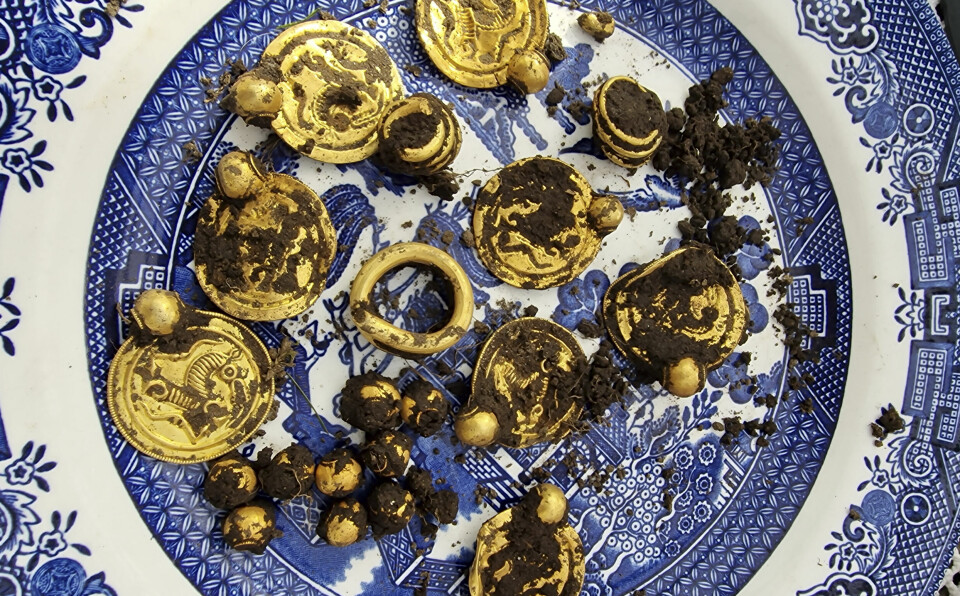
1500-year-old gold treasure discovered by metal detectorist: “This is the gold find of the century in Norway”
Nine gold pendants with rare horse symbols, ten gold beads, and three gold rings from the 6th century were recently discovered by a metal detectorist in Southwestern Norway.
Erlend Bore just wanted a hobby. So just before this summer, he bought a metal detector. To get him off his couch and go treasure hunting.
He was searching around the shore of the island Rennesøy in Stavanger, in Southwestern Norway, when the metal detector started to beep. In a lump of soil, he saw something that looked like gold coins.
“At first I thought I’d found chocolate money with a gold wrapper, or play money,” Bore says in a press release from the Museum of Archaeology in Stavanger.
But then he realised what he’d found.
Nothing less than “the gold find of the century in Norway”, according to Ole Madsen, director of the museum.
And it most likely dates to the 6th century.
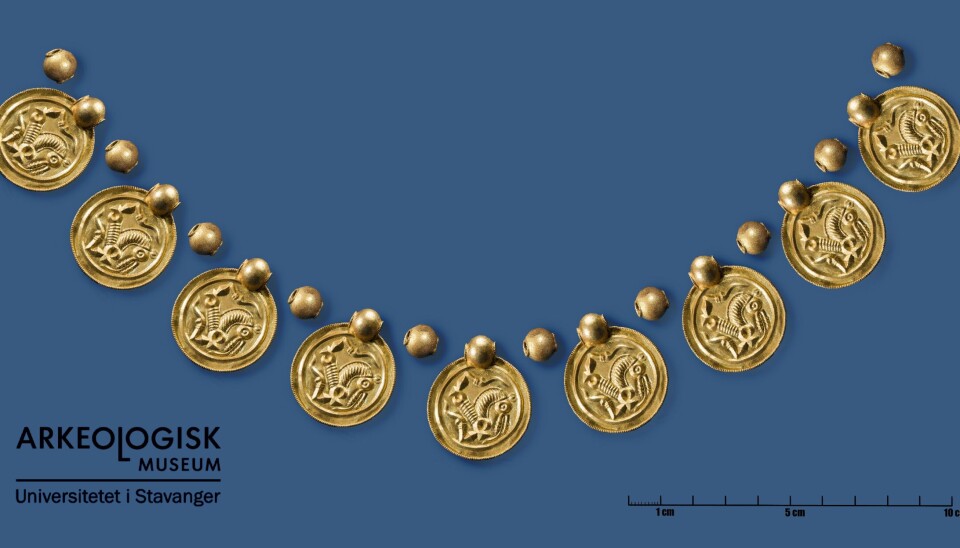
Pendants for the powerful
They look like coins, but the round and flat gold pendants that Bore found are called bracteates. Once upon a time, these nine bracteates formed quite the flashy necklace, according to Håkon Reiersen, associate professor at the Museum of Archaeology in Stavanger.
“This piece of jewellery was made by skilled gold smiths and worn by the most powerful in society. It’s very rare to find so many bracteates together. We have not had any finds that compare to this since the 19th century,” Reiersen says in the press release.
This time in history is known as the Migration Period, and later the Merovingian Age which starts around 550. A number of powerful people would have ruled over specific parts of what would later become Norway.
This was also a time of crisis, with failing crops, worsening climate and plagues, according to Reiersen.
“The many abandoned farms in Rogaland suggest that the crisis hit particularly hard in this area,” he says.
- You can read more about this here: The long, harsh Fimbul winter is not a myth
Many of the great finds of bracteates in Scandinavia have been hidden by somebody in the ground in the mid-500s.
Based on where the Rennesøy treasure was found, and comparisons to other similar finds, Reiersen believes that the gold treasure was either hidden for safekeeping, or perhaps offered to the Gods during desperate times.
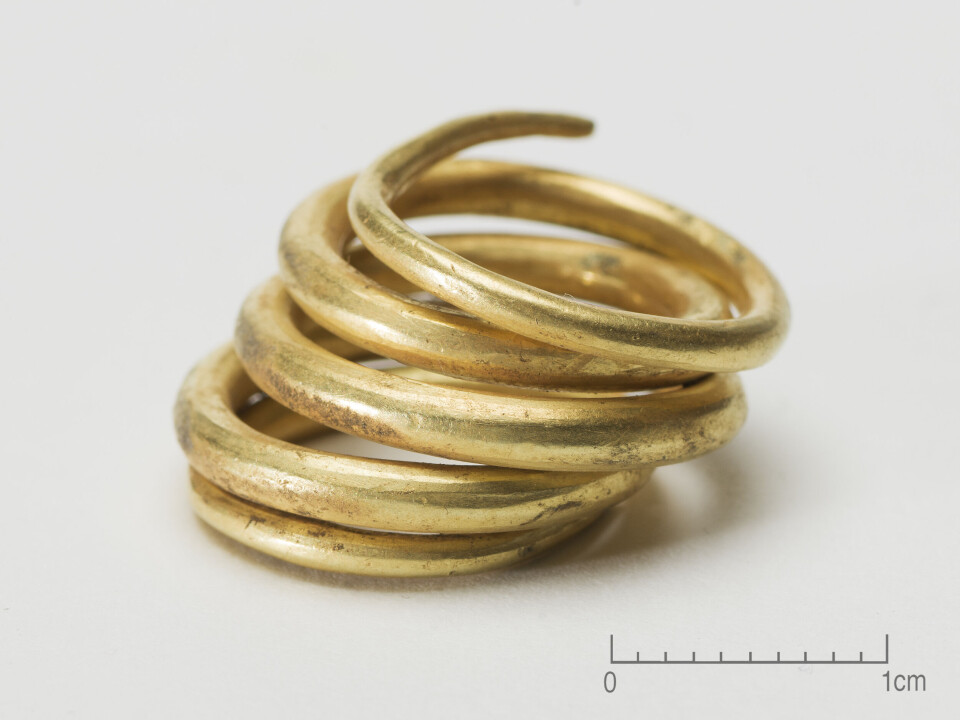

An incredible find
“This is an incredibly amazing find,” Dagfinn Skre says to sciencenorway.no. Skre is a Professor of archaeology at the Museum of Cultural History in Oslo. He has not been involved in the work around the gold treasure but spoke to sciencenorway.no about the significance of the find.
“It’s very rare to find so many bracteates of exactly the same kind in one place,” he says.
Finds often consist of a collection of bracteates with different motifs, but in this case, all nine bracteats depict the same thing.
Bracteates are flat and thin gold pendants that are stamped on one side.
“A thin sheet of gold is pressed down on a bronze stamp, so that a motif is impressed on it,” Skre explains.
The coin-like medallions could have different motifs, for instance animals such as boars or the Norse god Odin.
One example is a large gold treasure unearthed in Denmark in 2020 called the Vindelev treasure. The treasure consists of among other things bracteates that depict a male figure that could be Odin. Runic inscriptions here mention the name of Odin for the first time.
- Read more about this find: A gold coin that changes history - Oldest known reference to the Norse god Odin found in Denmark
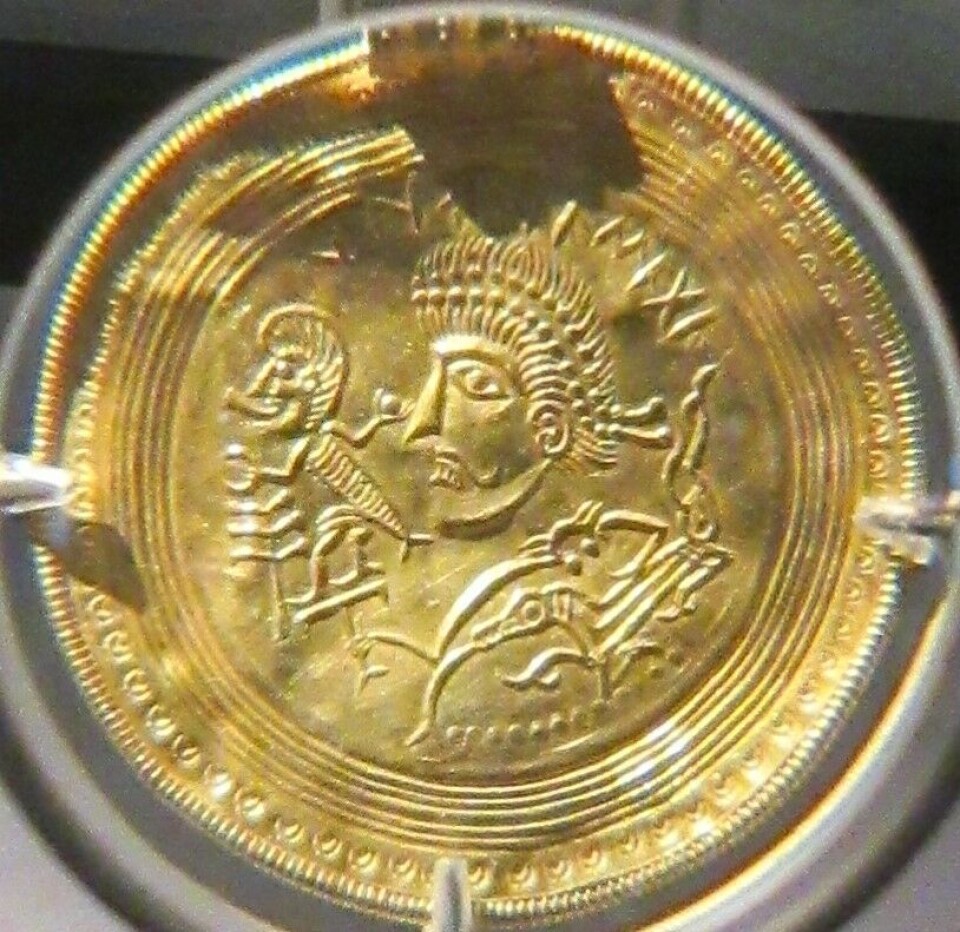
A rare sort of bracteate
Around 1000 bracteates have been discovered in Scandinavia, but the ones found in Rennesøy are of a rare sort, according to Sigmund Oehrl, Professor at the Museum of Archaeology in Stavanger and expert on bracteates and their symbolism.
“The motif is different than other gold pendants found up until now,” the Professor says in the press release.
The usual image on these round gold plates shows the god Odin healing his son Balder’s sick horse. According to Oehrl, this myth was viewed as a symbol of renewal and resurrection during the age of migration. It was believed to give its bearer protection and good health.
The Rennesøy-bracteates however, merely show a horse.

“In these gold pendants, the horse’s tongue is hanging out, and it’s slumping posture and the twisted legs show that it is hurt. Just as with the Christian symbol of the cross which was becoming widespread in the Roman Empire at the time, this horse symbol represented disease and distress, but at the same time also hope of healing and new life,” Oehrl says.
Gifts bestowed by the ruling kings?
Dagfinn Skre argues that the bracteates that are found in Scandinavia are similar to medallions that were stamped in the Roman Empire during the 4th century.
They are known from several sites in Norway and Denmark.
“In the mid-400s, Scandinavians started making bracteates themselves, that were quite clearly inspired by Roman medallions,” Skre says.
But what do these gold medallions represent? Skre explains that there are many theories regarding what the bracteates might be.
Skre believes they might have been gifts that local kings bestowed on their most trusted men. That way, the bracteates might have functioned as a sort of badge of honour showcasing who the king trusted the most around the country.
“Those who wore these sorts of things were likely powerful people. But it might be more complex than that. These objects were not important as items of value, but rather as something that showed your allegiance to a king,” Skre says.
He places the bracteates in the context of archaeological finds in Denmark. The first local bracteates were perhaps stamped in Fyn in Denmark, where the first kingdom in Scandinavia may have been established, according to Skre.
Referring to the Vindelev treasure again, where 13 bracteates with different motifs were found, he suggests that generations of families might have built collections of bracteates after being loyal to certain kings.
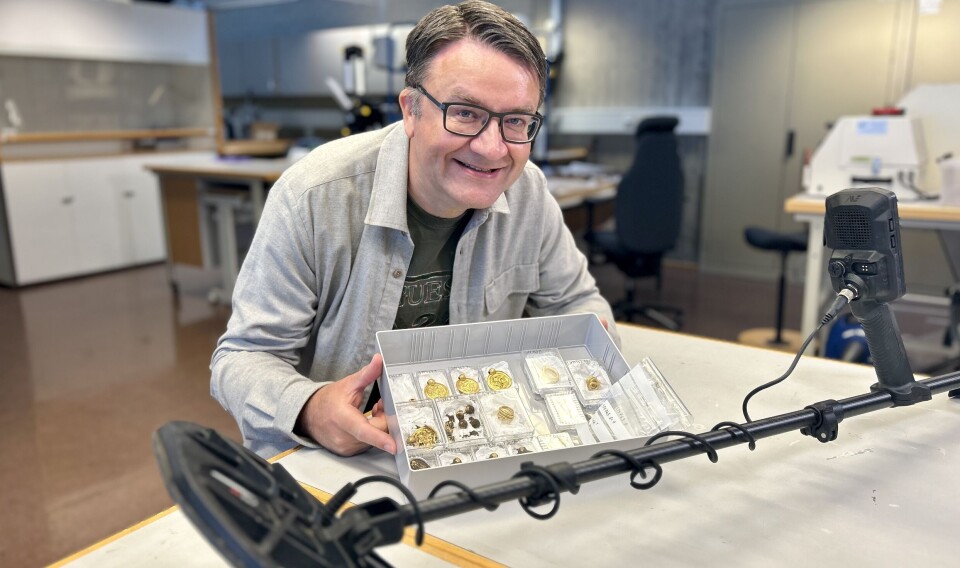
The right thing to do
In addition to the bracteates, Erlend Bore found ten gold beads and three gold rings. In total, the find has a weight of 100 grams of gold.
“It was completely unreal”, the 51-year-old says.
When he found the treasure, Bore did exactly what he was supposed to do: he marked the spot, stopped searching, and contacted Rogaland county municipality.
"We're very happy that he did the right thing", says archaeologist Reiersen. "It allowed us to go to the site and gather more information about what kind of a place this treasure had been deposited in," he says.
More images of the treasure and the site where it was found can be seen in the video below (words in Norwegian)






































